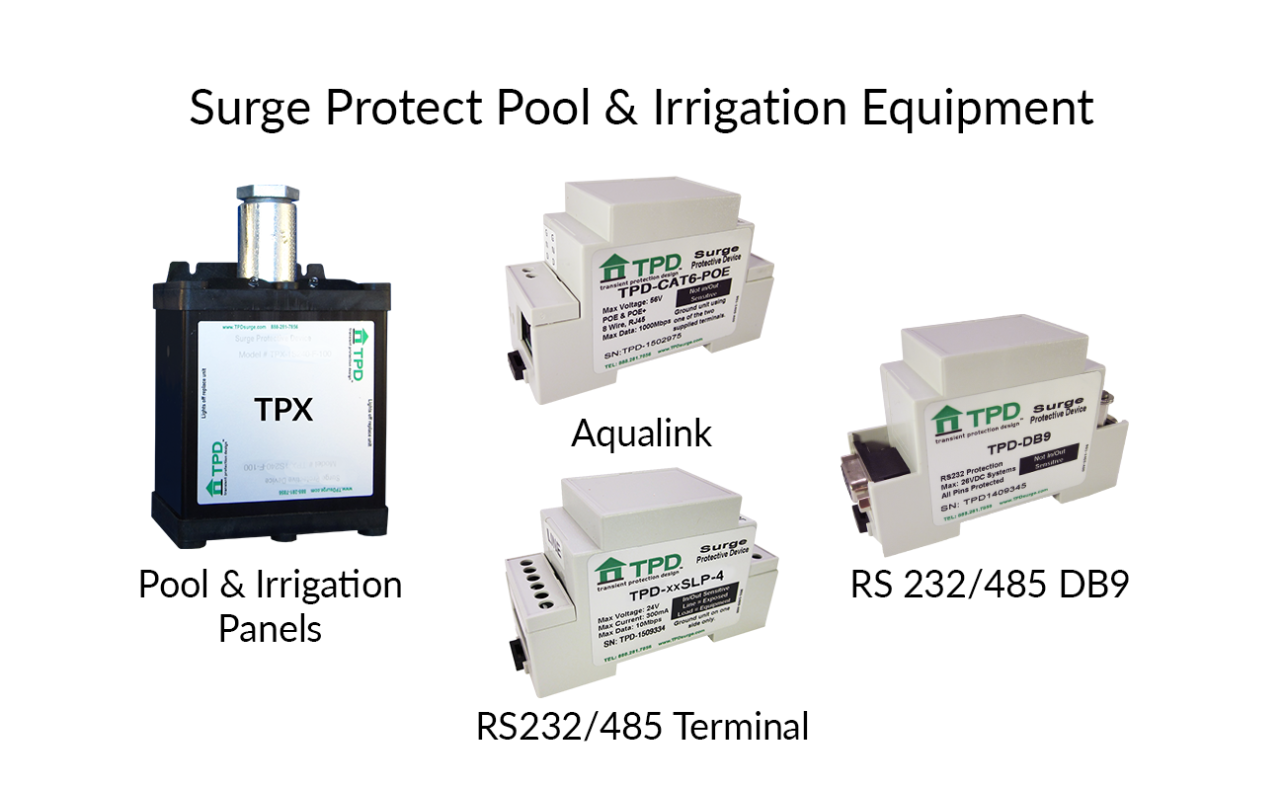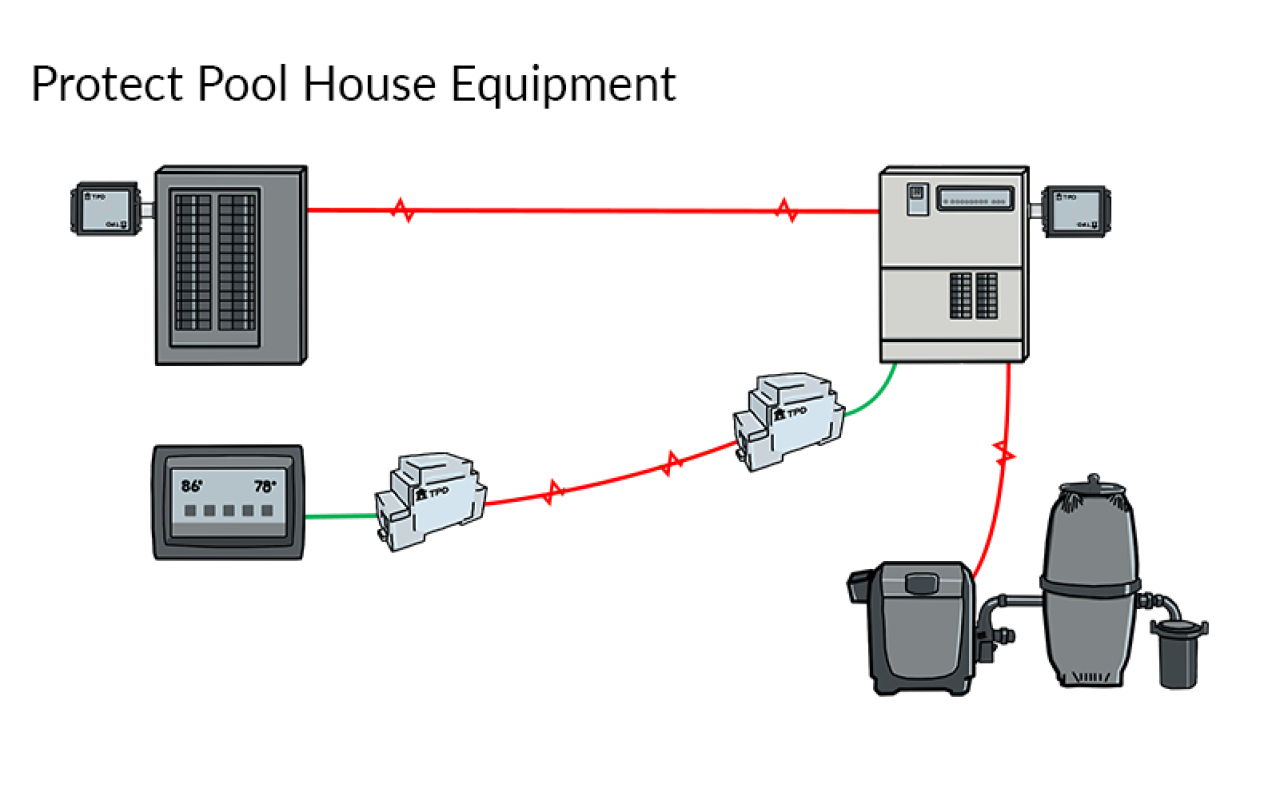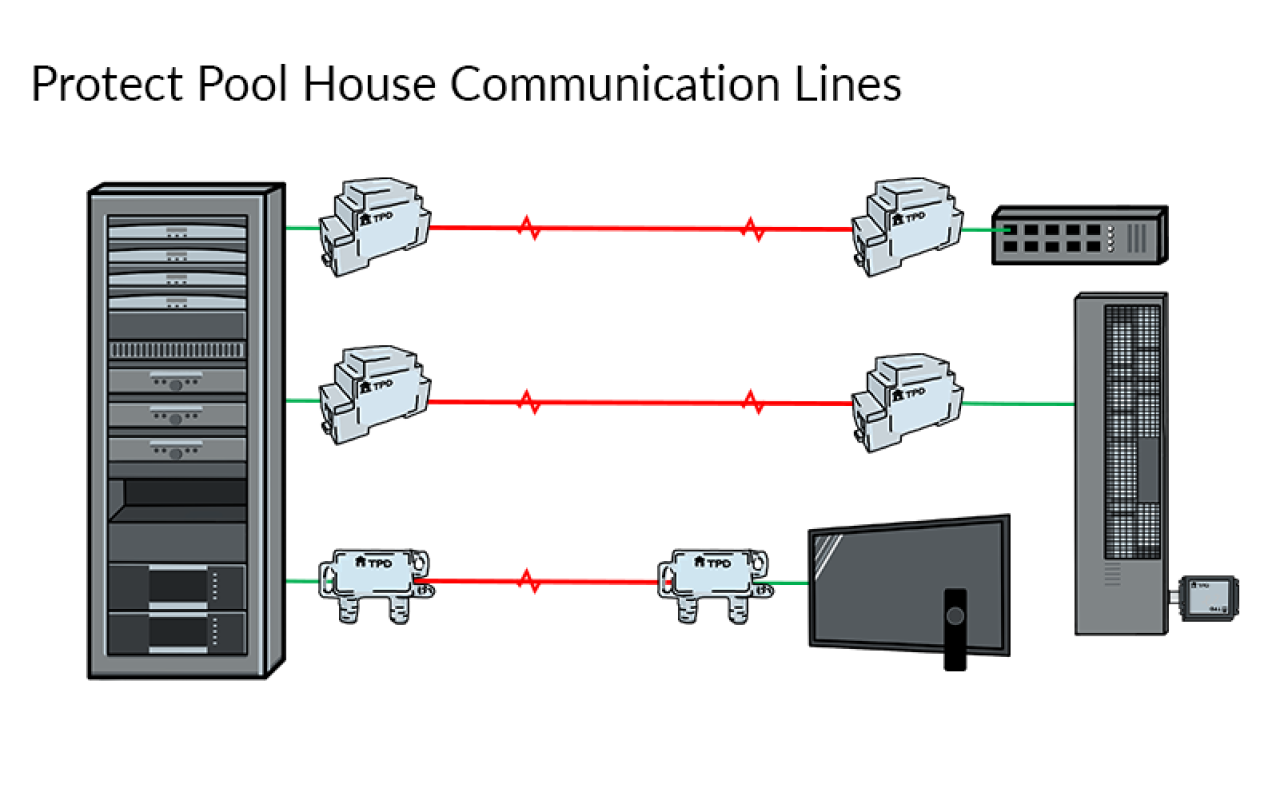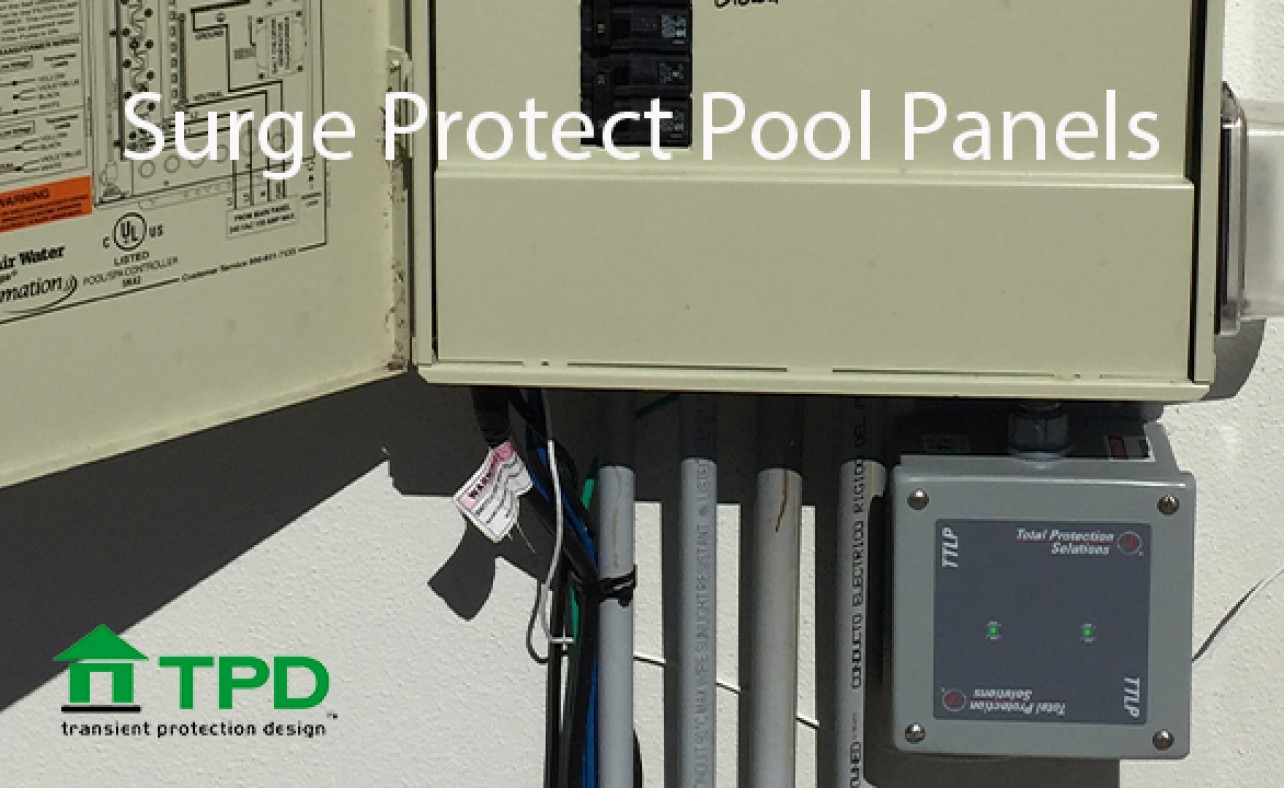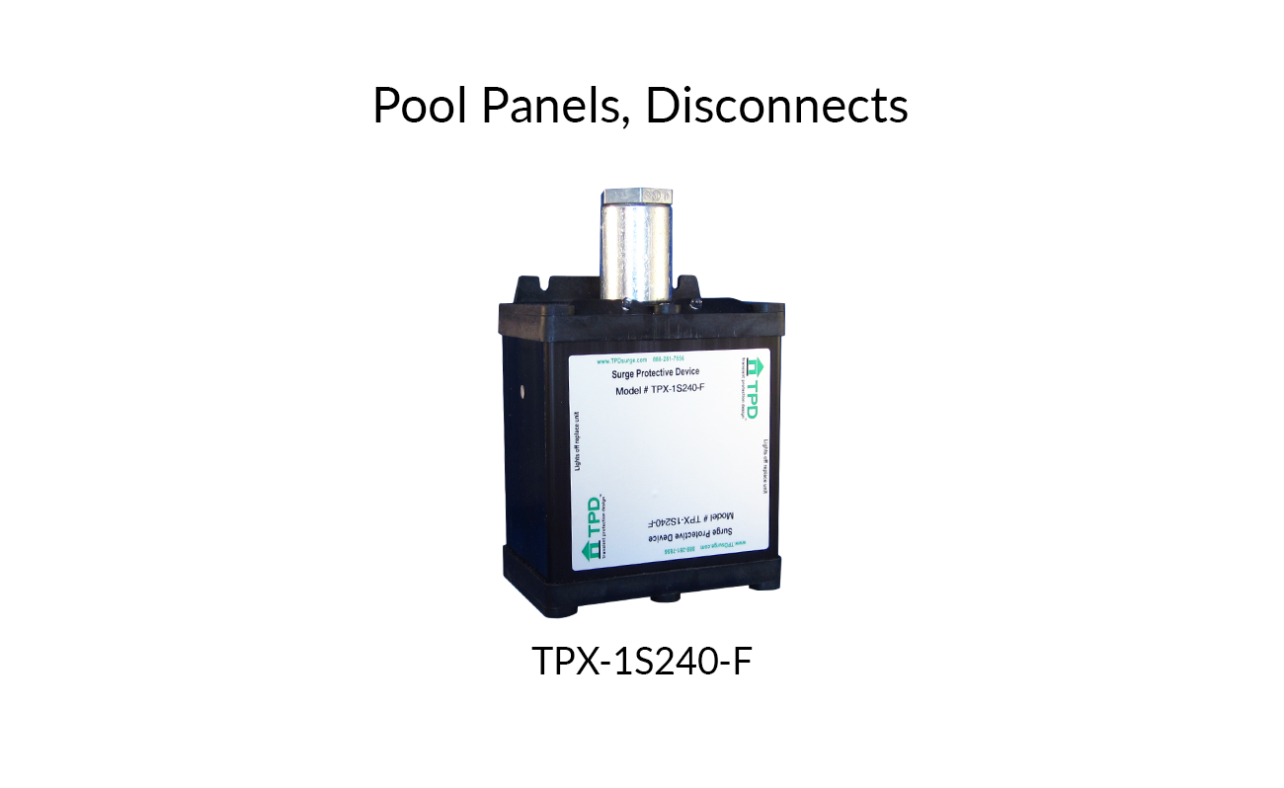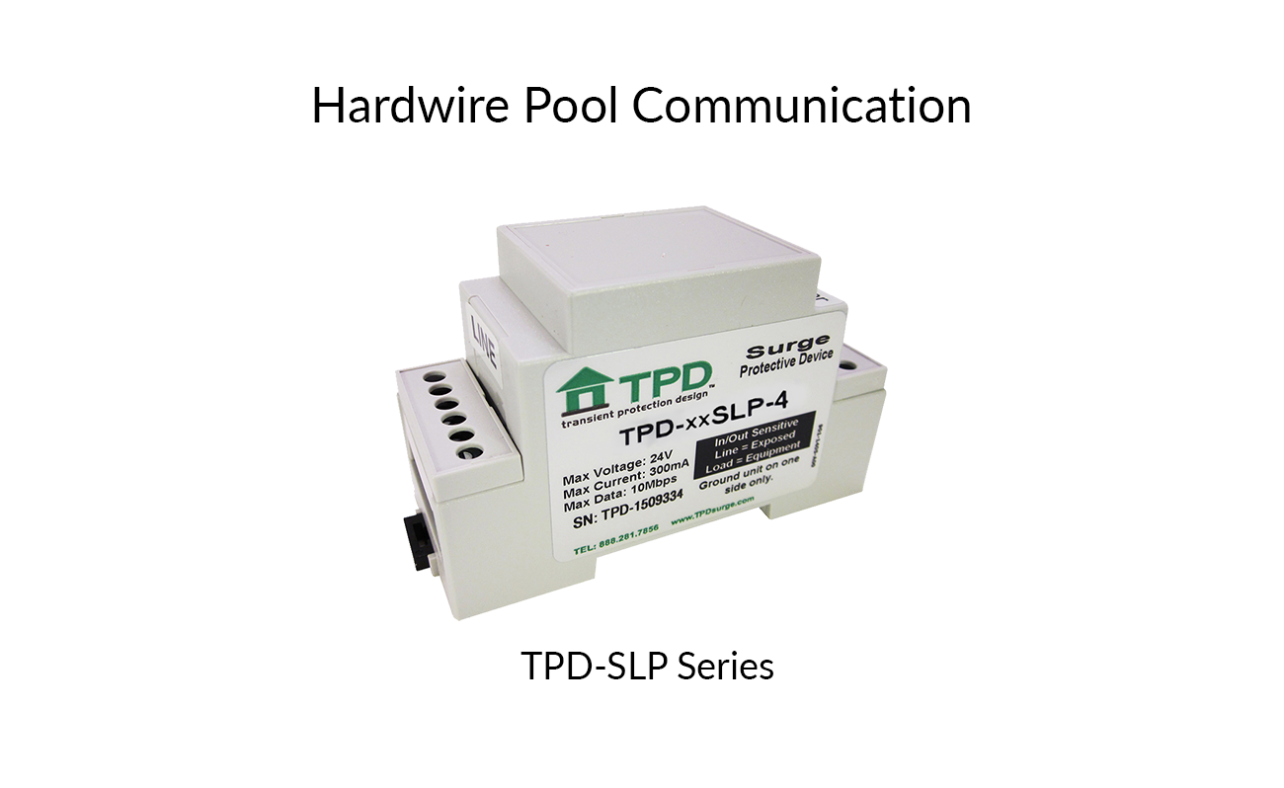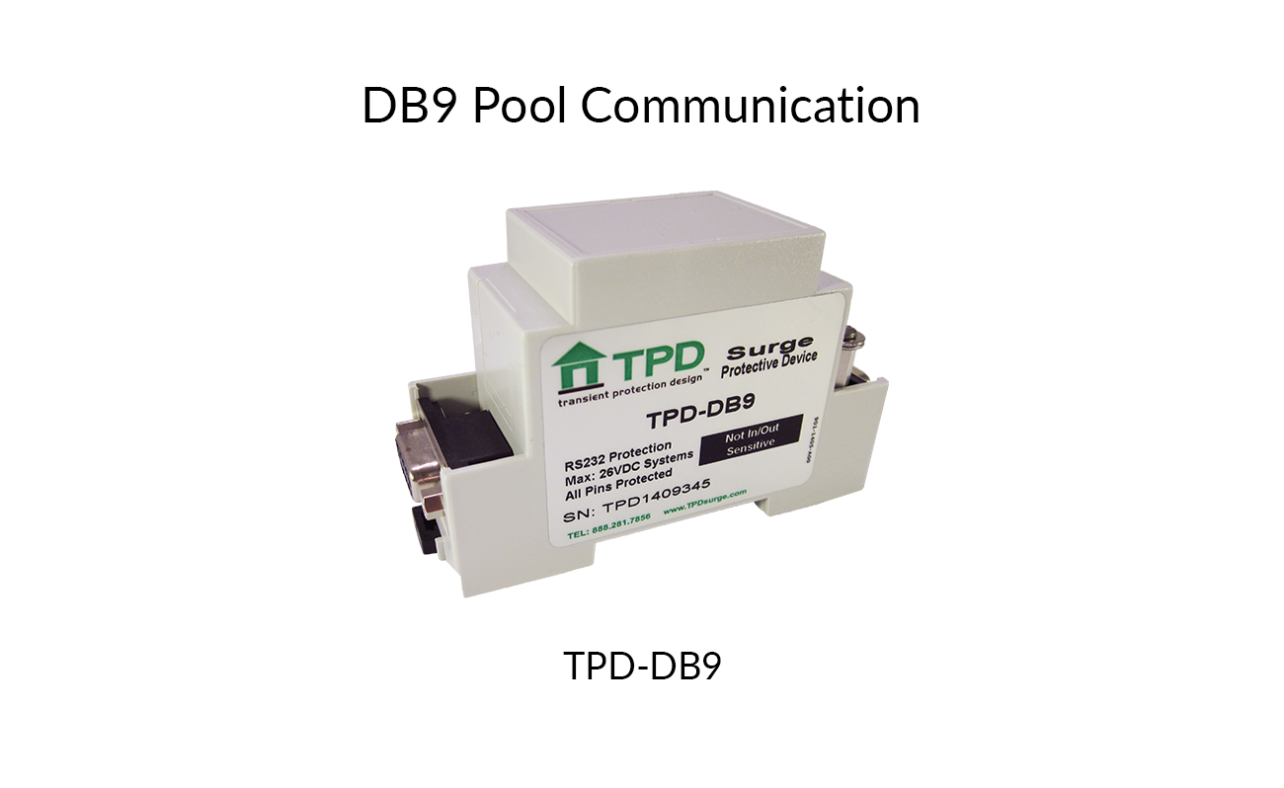Pool and Irrigation Equipment Surge Protection
Pool and irrigation equipment surge protection for equipment from manufacturers such as Jandy, Hayward, Pentair, Rainbird, Hunter, and Toro plays an important role in ensuring its longevity and functionality. Pool equipment is not only costly to repair, but also highly susceptible to lightning-induced surges. Pool equipment often communicates with other devices, so the risk of surge damage extends beyond the pool area. Without adequate surge protection, there's a significant likelihood of failure over time. Implementing TPD surge protection is essential to protect your investment and maintain operation of your system.
TPX-1S240-F Pool and Irrigation Panels, Disconnects
TPD-CAT6-POE Aqualink
TPD-24SLP4 Pool Communication
TPD-DB9 DB9 Pool Communication
TPD-24SLP4 Irrigation Communication
TPD eliminates transients & surges
which account for 85% to 95% of all
power issues, being the most common
and significantly the most damaging.
How To Surge Protect Pool Equipment
Surge Protect Pool and Irrigation Panels and Disconnects: TPX-1S240-F
Surge protect pool panels by installing a surge protector at the pool panel or disconnect.
Surge Protect Aqualink: TPD-CAT6-POE
Surge protect pool communication at both ends.
Surge Protect RS485 Hardwire Pool Controls: TPD-24SLP4
Surge Protect DB9 Pool Controls: TPD-DB9
Surge Protect Sprinkler Controller from Field Sensors: TPD-24SLP6
The Importance of Pool Equipment Surge Protection
Ensure Recreational Enjoyment
Pools are hubs of leisure and relaxation, both for residential and commercial users. Surge-induced damage to pool equipment, including pumps, heaters, and lighting, can disrupt the enjoyment of swimmers. TPD surge protection safeguards consistent pool operation, ensuring uninterrupted recreational pleasure.
Prevent Costly Repairs
Repairing or replacing pool equipment can strain budgets. TPD surge protection acts as a guardian, reducing the risk of electrical damage in both residential and commercial settings. This extends the lifespan of pool equipment, helping homeowners and businesses avoid unexpected repair or replacement expenses.
Enhance Safety
Pool equipment failures caused by surges can pose safety hazards, impacting water circulation, filtration, and lighting. In both residential and commercial pools, TPD surge protection with transient filtering prevents surges from damaging equipment with sensitive electronic components, ensuring the continued safe operation of the pool.
Maintain Property Value
A well-maintained pool enhances the overall value and attractiveness of residential properties. TPD surge protection plays a pivotal role in the longevity and reliability of pool equipment, potentially increasing a property's appeal to buyers. In commercial settings, it contributes to guest satisfaction and business reputation.
Energy Efficiency
Pool equipment, such as variable-speed pumps and LED lighting systems, are designed for energy efficiency in both residential and commercial applications. Surge-induced damage can reduce the efficiency of these systems, resulting in higher energy consumption and costs. TPD surge protection ensures the continued energy-efficient operation of pool equipment.
Environmental Responsibility
Effective pool equipment operation is vital for maintaining water quality and reducing chemical usage, which is essential for both residential and commercial pools. Surge-induced disruptions can lead to water imbalance and chemical overuse. TPD surge protection helps ensure responsible pool management in both contexts.
Minimize Downtime
In commercial pool facilities, downtime can lead to guest dissatisfaction and revenue loss. Surge-induced equipment failures can disrupt pool operation, causing inconvenience and financial setbacks. TPD surge protection helps maintain uninterrupted pool services, ensuring guest satisfaction and financial stability.
TPD surge protection for pool equipment in both residential and commercial settings is vital for ensuring safety, minimizing downtime, preserving investments, complying with regulations, enhancing recreational enjoyment, preventing costly repairs, promoting safety, maintaining property value, ensuring energy efficiency, and practicing environmental responsibility. Our surge suppression products are a wise investment that contributes to the safety, enjoyment, and financial well-being of both homeowners and businesses.

